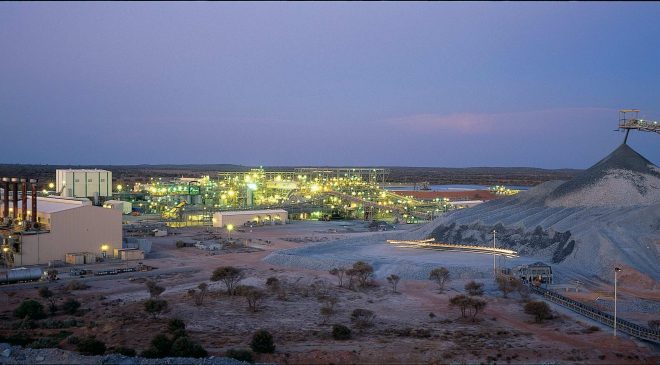
Laura Tyler chief technical officer at BHP gave a speech on how technology will be key to enabling the resources company find new opportunities.
The last year has been one of challenge and opportunity for us all. It is those two themes that will be the focus of my talk today, but before I get into that I want to begin with a story. The main character in this story is a metal that has recently found a renewed sense of popularity, and an old favourite of mine… Nickel.
From its humble beginnings as an accidental discovery, it soon became a vital ingredient in stainless steel that was then applied to pots, pans, and cutlery to superalloys in jet engines and medical equipment to coins. As scientists learnt more, nickel was used more.
Fast forward to today and we are still learning. Nickel is fast becoming the ‘work horse’ of battery technology, playing an essential role in the world’s efforts to decarbonise.
Stories like this remind me why I love this industry and it reminds me why companies like BHP exist. This is simply explained by our company purpose – ‘to bring people and resources together to build a better world.’
This connects us with what we do on a daily basis as well the broader reason our industry exists.
We know the world faces many challenges. But we also know the answer to many of them can be found in the very resources our industry finds and produces. Our products are essential for global economic growth and the transition to a lower carbon world. And we provide the commodities that improve the lives of billions of people in developing nations.
We also help engineers realise the dream of cleaner power, more efficient transportation, communications, and battery storage.
As exploration professionals we are vital to the delivery of a better future. We play our part at the front end of the value chain, and we unlock the resources the world needs.
A golden opportunity
At BHP, we believe in exploration. Discovery is the lowest cost path to growth and value-add for BHP’s shareholders. It is absolutely critical for our future and reflected in our strategy and our plans.
We will increase our presence around the world, including opening an office in Toronto, the home of PDAC.
To own the best assets in the best commodities, you have to look for them and develop them well ahead of time. To do so, we need to imagine what the world could look like in 50 or even 100 years from now. This is a dynamic process that involves rigorous analysis, reflecting a constantly evolving world. This process helps identify what commodities we want to be in, and where we see value and rent based on our global endowment studies and supply / demand analyses.
An example of great success in this process and sustainable long-term investment, is our Mt Whaleback mine in Northern Western Australia.
BHP sought and developed this asset based on a view that steel was desperately needed to drive the world economy well in to the future. We were right, and it has produced some of the highest-grade iron ore in the world for more than 50 years.
Long-term investment in our collective future is what we strive for. But we can’t be single minded.
We understand it is not practical, nor economical, to just rely on a single thread of strategy to deliver success. We know we must use our competitive advantage to find them ourselves and support our selected partners in realising discovery together. And we are prepared to make the right early entry investments and acquisitions under the right terms to deliver growth options.
We are also intimately aware that – how we explore – the future does not lie in nostalgia; we cannot just do more of what we’ve done for the last 30 years. We must innovate.
This won’t be easy, but it will be worthwhile. I strongly believe that the golden years of exploration are ahead of us. We just need to harness what Mr Crondstedt, and the millions of scientists that followed, found to be successful to build a better world: we must think big, innovate and apply new technology to unlock opportunities to safely find the resources of the future.
-
Challenge #1: The quest for quality
The current residual search space for new mineral districts is reducing , and future districts now lie in areas of high country risk, or in lower-risk jurisdictions under cover. The minerals industry is in transition to undercover exploration much like the petroleum industry transformation to deep sea exploration some decades ago. To do this, we must rely on a holistic evaluation of the mineral system, gaining a full appreciation of the potential of a district through an understanding of its formation.
Discovery of what we call ‘Tier 1’ resources has therefore become more technically challenging, but at the same time, more engaging.
The other part to this, which is many times more difficult, is finding actual mines…large, high quality discoveries that have a realistic chance at feasibly being developed into operational assets within an appropriate timeframe.
In practice, this means more discoveries like Oak Dam in South Australia.
In 2017, our metals exploration team took a fresh approach to this mature district. They challenged the paradigm, and looked very closely at the science through the lens of the Mineral Systems Framework and the knowledge we had gained from on IOCGs from Olympic Dam. In just 4 years, the team made a discovery under 800 metres of cover, outlining mineralisation with intercepts including 58 metres @ 2.49% Cu, and 1.2 g/t Au over wide areas. It is mineral system understanding and application that will distinguish success in the future.
I am also proud to note the BHP metals exploration team will present on this discovery story on at PDAC this week.
-
Challenge #2: Higher expectations of sustainability
The second test that I’d like to talk about is one that is certainly not specific to our industry, but a huge challenge to everyone all over the world… sustainability.
The impact of emissions, the stewardship of our planet, and how we maintain the quality of our atmosphere, hydrosphere, biosphere, and terrasphere are key concerns.
Society and our stakeholders are acutely aware of the impact we as an industry can have on the earth. And their expectations of us – quite rightly – continue to evolve and grow.
The interesting catch to all this is that under even the most aggressive decarbonisation scenarios, the world needs more minerals, and therefore more discoveries leading to more mines.
In a 1.5-degree scenario the world is expected to need almost twice as much steel in the next 30 years as it did in the last 30.
Copper production will have to double over the next 30 years to aid the development of renewable technologies and distribution of new charging infrastructure.
And nickel production will have to increase nearly four-fold to power the next generation of battery technology and the forecast demand for electric and hybrid vehicles.
And the world will still need oil and gas to power mobility and everyday modern life on the pathway to decarbonisation.
-
Finally, Potash will be vital to ease pressure on scarce, arable land
As copper grades decrease, strip ratios rise and deposits get deeper, more water and energy is required for the same amount of copper output.
In order to fully seize the opportunity to be part of a sustainable future we need to minimise our material and environmental footprints. Our focus must be on high quality resources defined by more extractable metal per kilowatt hour and ton of water.
This must now be a key consideration in the exploration and evaluation phase: we must find resources that can become mines and operate feasibly under higher sustainability standards.
-
Opportunity #1: Technology
Technology will be key to enabling this, and provides a path into a far more optimistic part of my talk.
The majority of the exploration industry thinks that the golden age of discovery is behind us. That industry was based on using technology geared to at-or-near surface discovery. However it is my belief that the golden age of discovery is ahead of us.
By harnessing technology we can make the Earth at 400 metres depth as transparent to exploration as the surface of the Earth is today. And we can do this in a number of ways:
Firstly, through systems. For more than two centuries we have hunted for deposits. But these are the smallest expression – and therefore the hardest to find – of the mineral systems in which they manifest. Taking a more holistic view of the systems themselves will allow us to create new insights. My team in South Australia looked carefully at the mineral system in the Oak Dam example I mentioned earlier. This gave us new insights in to how we can further evolve our approach.
Utilising new technology
Significant technology investment does not guarantee success though. At BHP, a rigorous assessment of capability gaps set in a context of challenging geological and regulatory environments shapes our investment. As an example, real-time sensors, multi-physics arrays, and data analytics all accelerate decision-making, reduce the logistical effort, and improve confidence in discovery.
Specifically in multi-physics, BHP is collaborating with industry partners to develop the next generation of sensors, designed to maximise data collection and minimise the footprint on the ground. Parallel acquisition of magnetics, electromagnetics, gravity, and potentially passive seismic geophysics will then allow content to be assessed in a holistic petrophysical property model.
In our nickel mines in Western Australia, we have partnered with Ideon Technologies to use leading-edge cosmic ray muon detectors – underground sensors that can image sulphide orebodies above them – to aid detection and delineation of resources.
In data analytics, we are also developing strong partnerships with some of the leading innovators in their fields. In Western Australia we are partnering with ‘Sensore’, a company that has spent more than a decade investing in a world-class data analytics workflow for discovery in the Yilgarn.
In northern Chile, we have partnered with ‘DeepIQ’, a company translating its expertise from petroleum basin analysis to hard rock discovery.
How realistic is tangible technological change?
Since the turn of the century, discoveries in deeper water have been enabled by systems thinking — leading to the novel concept that petroleum systems could be effective in these environments. This then drove technology to better image systems, delineate targets, and drill and then produce the resources in this technically challenging environment.
-
Opportunity #2: Collaboration
This collaboration presents tremendous opportunities to magnify our understanding and insights.
I have pointed out a few examples of our external partners, so let me describe an example that showcases the benefits of internal collaboration within BHP.
As many of you will know, we are a unique resources company in that we run both petroleum and minerals businesses. What you might not know is that this is a competitive advantage we are using to tremendous effect, particularly as it relates to exploration.
Every few years, our Petroleum Exploration and Appraisal team conducts a Global
Endowment study. It is a key input into our business planning and helps us allocate resources to parts of the world that have the highest potential to be developed into productive assets. Quite separately, our Minerals teams do the same thing. That was the case until recently, when our Petroleum and Minerals teams got together to reinvent the way this process works to the benefit of all involved.
The collaboration drew on multiple data sets, multiple technical backgrounds, and multiple disciplines and skills, to amplify our understanding of mineral systems and yet-to-find search spaces. One outcome was the development of a new application – aptly titled “Wormhole”. This allowed us to move geologic maps through space and time. It took the team just 24 hours to rotate 30,000 maps rather than an estimated nine months using commercially available software.
Collaboration and true partnerships, internal and external, are what will propel us in to the future of exploration. To us, the benefits of collaboration are so obvious and too important to ignore, so a key call out from me today is that BHP is ‘open for business’.




